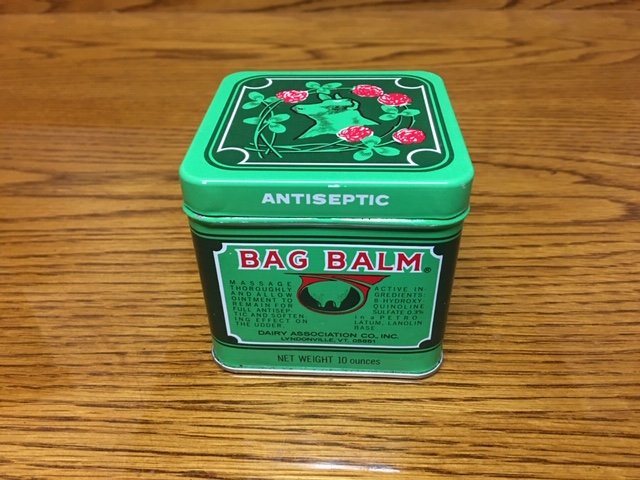Q: One of my neighbors swears that Bag Balm® helps cure foot fungus. Is that true?
Not really. In fact, applying Bag Balm® to athlete’s foot can make it WORSE!
Any organism will grow better when in their favorite conditions. Many plants thrive in sunlight but others grow much better when they find a shady spot. While some plants love to be watered daily, others like iris and cacti become stressed and can die if they are watered too frequently.
Fungus and yeast organisms love warm, dark and moist places, which is why we find fungus and yeast more often between our toes and in our groin area than on the tops of our feet or on our elbows. Babies can get a diaper rash from yeast if their diaper stays wet too long before being changed.
Bag Balm® was originally marketed to dairy farmers to smear on the udders of their cows in order to prevent skin irritation and speed the healing of minor cuts and scrapes. Although licensed for veterinary use only, many farmers starting using it on themselves and their family to treat cuts and chapped skin with good results, and still keep Bag Balm® in its iconic bright green square metal can handy for first aid.
Bag Balm® has 3 main ingredients: petroleum jelly or Vaseline®, lanolin, also called wool fat, and 8-hydroxyquinoline, an general anti-infective. 8-hydroxyquinoline is considered an excellent topical anti-infective and is also available for cuts and scrapes as the active ingredient in liquid bandages such as New Skin®. The 19th edition of the United States Dispensatory published in 1907 describes it as a very powerful antiseptic.
8-hydroxyquinoline can stop the growth of bacteria and fungi by combining with certain trace minerals found on the surface of bacteria and fungi. This prevents microorganisms from taking in nutrients, causes them to “starve”, and prevents them from reproducing.
Although 8-hydroxyquinoline can keep fungus from growing, putting it on your feet won’t guarantee you’ll eliminate athlete’s foot. That’s because Bag Balm® is only available as an ointment, and ointments soften dry skin by trapping moisture in the skin where you apply it.
Applying an ointment can soothe chapped, dry or cracked feet but will also encourage fungus to grow faster because it increases moisture in your skin. If you apply ointment to your feet, then put on your socks and shoes, you’re creating a warm, dark and moist place, just what every fungus needs to thrive.
Instead of reaching for Bag Balm® to treat foot fungus, keep your feet as dry as possible by drying between your toes after a bath or shower and changing your socks frequently. Use an anti-fungal cream until the fungus gets under control, and then switch to a spray powder daily to help prevent it from coming back.
Q: Can I use Bag Balm® for my baby’s diaper rash?
I don’t recommend it. Babies have much thinner skin than children or adults, and the genital area has the thinnest skin of all. The thinner the skin, the more easily you can absorb compounds into your body that are applied to your skin. Broken or blistered skin is even more likely to absorb stuff that was intended only for use on the outside, not the inside.
When treating a diaper rash, wash the area gently and let it dry completely before using any cream, ointment or other protectant. Using an ointment on the diaper area is helpful if the diaper rash is not yeast. Because babies have such thin, sensitive skin it’s best to avoid using anything with a specific anti-infective in the diaper area.


